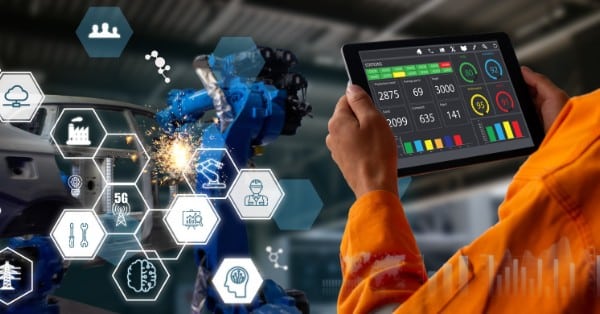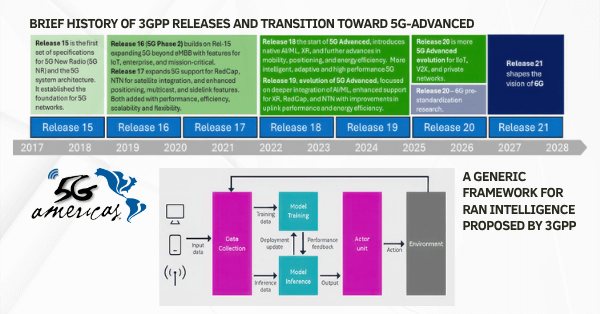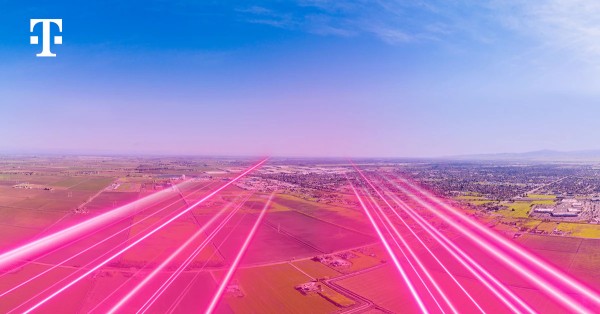The Head of GSMA Foundry, and lead for Connected Industries at MWC25, Richard Cockle, discusses why the industry is at a turning point as telcos look to move beyond traditional connectivity, plus why GSMA’s Connected Communities can help the journey
What can we expect from Connected Industries at MWC25 Barcelona?
Get ready for a deep dive into how Industry 4.0 technologies are transforming sectors like manufacturing and production, fintech, smart mobility, and sports and entertainment. Connected Industries at MWC25 is an exciting showcase of the cutting-edge innovations reshaping the way businesses operate and engage with customers.
Reflecting the major themes of MWC25, you can expect big conversations on 5G, private networks, and AI, with real-world applications taking centre stage. How are fintech companies leveraging network intelligence, GSMA Open Gateway and security? What’s next for connected vehicles in smart mobility? How’s mobile tech revolutionising fan experiences in sports and entertainment? These are just some of the key topics we explore.
As lead knowledge sponsor of Connected Industries at MWC25, Accenture has played a key role in shaping our agenda, ensuring we tackle the most pressing challenges and opportunities across industries. And while Connected Industries at MWC25 puts the spotlight on these conversations for a week, the work doesn’t stop there. Through GSMA’s Connected Communities, these discussions and connections continue year-round, driving lasting impact across industries.
Beyond these discussions at Connected Industries, the event is always a huge opportunity for collaboration. Industry heavyweights like NVIDIA and 5GAA will take to the stage, offering insights and sharing real-world advancements.
How do you see the Connected Industries events and sessions shaping the future of sectors like manufacturing and productivity, fintech, smart mobility, and sports and entertainment?
One of the best parts about Connected Industries at MWC25 is that it doesn’t just show off the latest tech, it’s about real-world impact. The sessions and summits bring together mobile operators, enterprises, and industry leaders to tackle real business challenges and learn how technology can drive real business outcomes and revenue.
Take manufacturing and production, for example. Here, 5G and IoT are already transforming production, making operations smarter and more efficient. Sessions like Transforming Ports and Mines with Advanced Network Technologies show us exactly how this plays out in real-world industrial settings.
Fintech and commerce are enjoying serious upgrades, driven largely by APIs and mobile networks. APIs, for example, allow better integration and communication between the various financial systems, enabling automation and real-time data access. When combined with network intelligence and initiatives like GSMA Open Gateway, APIs can also enhance security, streamline transactions, and power hyper-personalised banking experiences. At the Fintech and Mobile Commerce Summit, we explore these in more detail, along with other ways technology is disrupting fintech.
In smart mobility, the focus is on the future of connected vehicles. Think AI-driven traffic systems, autonomous fleets and seamless connectivity – all powered by smart private networks. 5G enables low latency and increased uplink for better real-time decision-making in autonomous fleets. At the Smart Mobility Summit, we’ll explore how 5G and AI are driving the next wave of innovation in transportation.
And in sports and entertainment, fan experiences are evolving fast. From AR-enhanced, in-stadium experiences at live events to immersive at-home streaming, our Sports and Entertainment Summit will explore how mobile tech is using 5G, AI and private networks to bring fans closer to the action than ever before.
Many believe the telecom industry is currently at a crossroads. While current services are stable, is there a significant opportunity for telco to evolve beyond traditional offerings?
Absolutely, there’s a huge opportunity waiting to be unlocked beyond traditional connectivity services. In fact, a recent GSMA Intelligence report uncovered a $400 billion enterprise market just waiting for telcos to tap into.
Right now, most B2B revenues in telco come from core offerings like SD-WAN and unified communications, but these are only growing at about 3% per year. Meanwhile, enterprise spend in areas like cloud, cybersecurity, IoT, AI and blockchain is set to nearly triple by 2030, growing at a much faster 14% annually.
These figures make a compelling case. But here’s the key shift: to succeed, telcos can’t just be connectivity providers anymore. They need to think and act more like IT consultants, offering complete solutions rather than just selling network access. That means streamlining their enterprise offerings, adapting sales and marketing strategies, and building new technical and commercial expertise.
In short, the real opportunity in telco isn’t just in selling services – it’s in becoming trusted, long-term partners for digital transformation.
That’s why MWC25 could represent a major turning point. It’s not just business leaders and decision-makers within the mobile ecosystem who’re flocking to Barcelona. It’s senior folks and c-suiters from a diverse range industries seeking opportunities to transform their own industry and business with technology.
In fact, over 50% of attendees at this year’s MWC come from outside the telecom sector. The status quo is sustainable but there’s a new world of opportunity out there for those willing to shake things up.
What’s driving telcos to evolve beyond their traditional services, and what cultural changes are necessary to make this shift successful?
Currently, the push for telcos to expand is largely driven by two main factors: the need to enhance cybersecurity and the desire to boost revenue. GSMA Intelligence research shows 60% of businesses prioritise revenue growth, customer experience, and staying competitive over merely cutting costs in their digital transformation efforts.
How do they achieve this? As I stressed earlier, this shift is, at its very core, about mindset. Telcos need to undergo a significant cultural transformation. This means moving away from a traditional connectivity-focused mindset and adopting a more holistic, solution-oriented approach. It’s about re-thinking go-to-market strategies, building new skills and structures, and adapting pricing and incentives.
As we all know, the enterprise market is busy and fiercely competitive. IT providers hyperscalers, software startups… they’re all vying for the same customers. Telcos that act fast, evolve their business models, and position themselves as true technology partners (not just connectivity providers) have the potential to come out ahead.
How do the GSMA’s Connected Communities drive innovation and create new opportunities for operators and industries?
The GSMA’s Connected Communities kicked off in 2021 with a simple goal, to bring people together to spark ideas, build new capabilities, and create real-world solutions. The GSMA is in a unique position here: we can promote collaboration between mobile operators, industry leaders, and ecosystem partners to make sure enterprises have the right tech in place to drive their businesses forward.
Unsurprisingly, Connected Communities is growing fast. Over 400 organisations are now involved, spanning telcos, industry players and even government bodies. That kind of scale means real impact.
With traditional telecom growth slowing, operators are shifting gears and focusing more on B2B tech services. And for good reason. The B2B market is already worth $1.3 trillion in 2024 and is set to more than double to $2.9 trillion by 2030. That’s a huge opportunity for telcos, with nearly $1 trillion up for grabs.
As mentioned, around $400 billion of that market is ready for operators to tap into right now. How? Well, unlike the consumer side of telecom, B2B is all about customisation (think cloud, IoT, cybersecurity, and edge computing). These are the areas where operators can move beyond connectivity and become key partners in digital transformation across industries like finance, manufacturing, automotive, and aviation.
At the end of the day, Connected Communities is about helping operators evolve and take on bigger roles in the digital world. What makes it truly special, though, is that it’s not just about keeping up, it’s about leading the way.
Many of the topics above will also be explored at the CIO Summit during MWC25, as companies continue to focus on turning the promise of technology investment into value. The CIO Summit brings together a cross-section of executives including CIOs, CTOs, Mobile Network Operators and systems integrators – looking to manage a digital infrastructure plan that delivers ROI to their business in terms of data management, automation, productivity, transparency, security and more.
Register now for MWC25 Barcelona to explore how telcos can move beyond connectivity and unlock new enterprise opportunities at Connected Industries, and the CIO Summit on March 5, 2025, from 15:00-18:00.





























